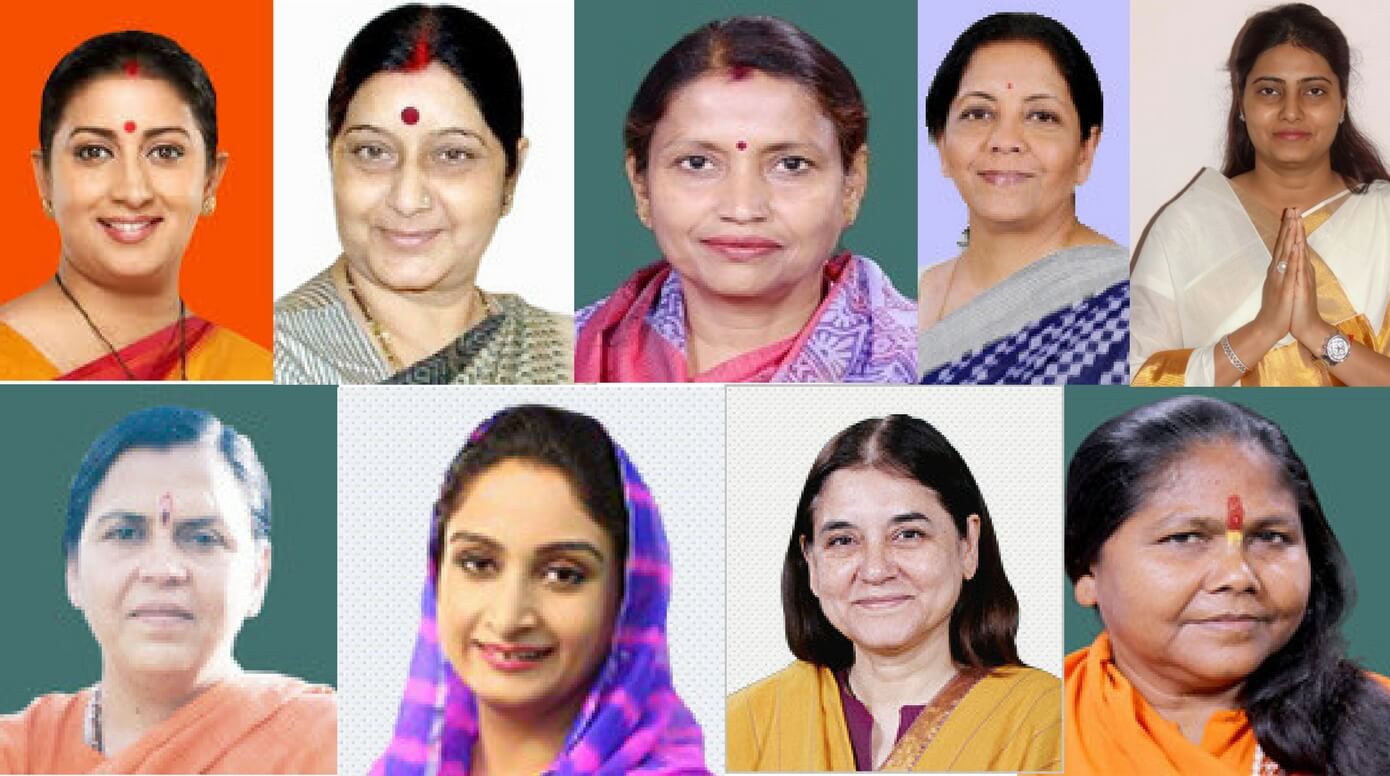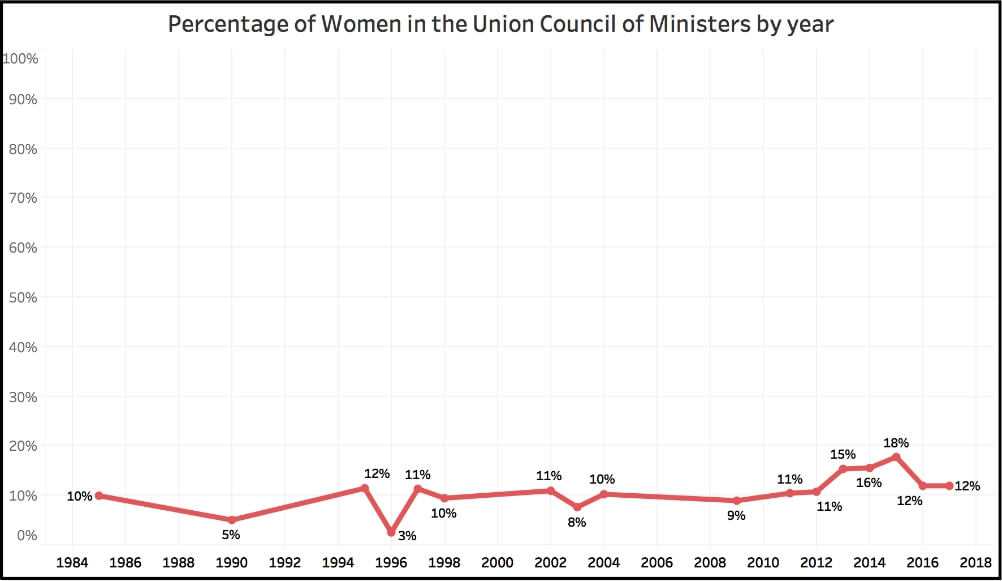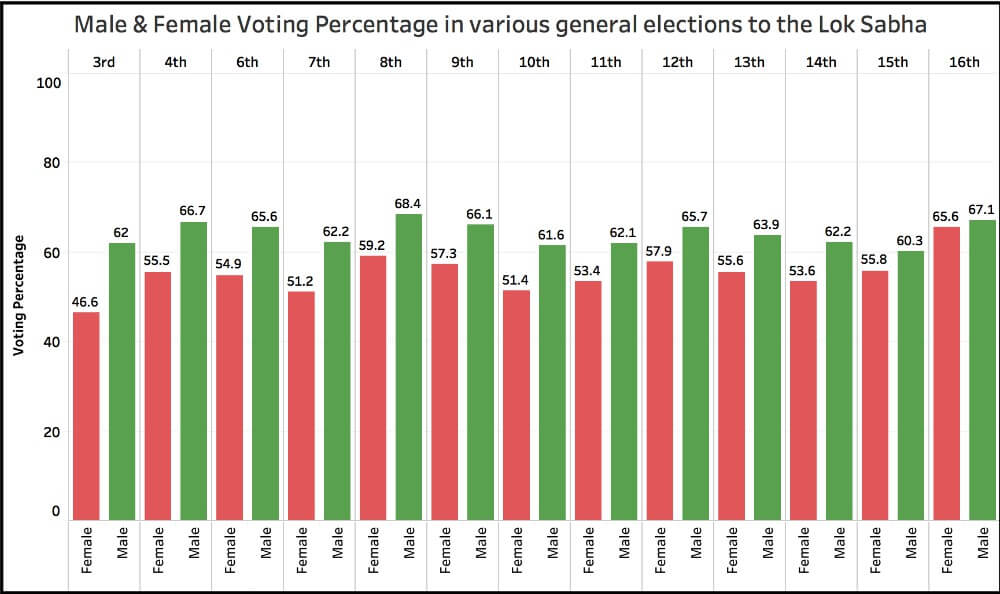[orc]The representation of women in the Union Council of Ministers currently stands at 12% with 6 Women of Cabinet rank. Voting percentage of women in the Lok Sabha elections has increased by over 20% compared to 1962.
In September 2017, Nirmala Sitharaman was the first woman to be India’s Defence Minister in 35 years. Former Prime Minister Indira Gandhi was the first woman Defence Minister of India. She held the position twice, for the first time in1975 and then again in 1980. The current Cabinet Committee on Security has two woman members with Nirmala Sitharaman joining Sushma Swaraj, who holds the Ministry of External Affairs. The total number of women ministers in Union Cabinet is 6 while their number in the Union Council of Ministers is 9.
What about Portfolios?
Traditionally women in government and politics were given ‘soft power’ portfolios to create represntation and not necessarily participate in the decision making. The IPU-UN Women, supported by Global Affairs Canada, the department that leads Canada’s international development and humanitarian assistance, also calls attention to the fact that women continue to hold the lion’s share of so-called ‘soft issue’ portfolios in government. However, there is evidence of some change: for the second time since 2005, the Family/ Children/ Youth/ Elderly/ Disabled portfolio is not among the two most common women-headed Ministries. At 8.7 per cent, the Environment/ Natural Resources/ Energy portfolio is for the first time the most commonly held portfolio by women ministers, followed by Social Affairs at 8.2 per cent. Considering that trend, 3 of the 6 woman held portfolios in India are Food Processing Industries, Women and Child Development, Water Resources and River Development.
Data on women ministers reveals that 30% of environment ministers are women (47 out of 161), a 10% increase from 2015. IPU research indicates the ascent of the environmental category is likely due to the appearance of a few, very recent, new portfolios such as Climate Change and Sustainable Development, which are held by women to a considerable extent. Of particular note, there is a change in the number of women in charge of women’s affairs, with a 10 percent decrease to 64 women ministers out of a total of 77 ministries. This means that the number of men leading this ministry is on the rise.
Women in the Union Council of Ministers
The percentage of women in the Union Cabinet in India was the lowest in 1996 at 3% and the highest at 18% in 2015.
According to the Women and Men in India Report, the number of women contesting in elections has risen from 45 in 1957 to 668 in the 16th Lok Sabha elections held in 2014. Interestingly, the percentage of winning candidates has drastically declined from 60% to 9.3% in the same time period because of an increase in the number of contestants.
State wise data on Women MPs reveals that at Least 10 states have no Women MP’s.
Women voter turnout
In the 16th Lok Sabha election in 2014, the women voter turnout is on par with the male turnout with slight differences based on each state. Highest difference in male and female voter percentage is 5% in Madhya Pradesh. Some of the states recorded more women voter turnout compared to men. In 1962, the female voting percentage was 46.6% while the figure for male was 62%. In 2014, the female voting percentage was 65.6% and the male voting percentage was 67.1%. While the women voter turnout has increased by almost 20%, the corresponding increase in the male voting percentage is only 5.1%.
In 1962, the female voting percentage was 46.6% while the figure for male was 62%. In 2014, the female voting percentage was 65.6% and the male voting percentage was 67.1%. While the women voter turnout has increased by almost 20%, the corresponding increase in the male voting percentage is only 5.1%.
What is the way forward?
According to an IPU-UN Women , a global average of only 22% women in parliaments around the world indicates that it is male-dominated and women MP’s often lack equal representation in senior positions or on decision making bodies. In order to move away from traditional practices and pave way to more women, political commitment along with examining institutional and social barriers that deter equal representation and participation is necessary.
This is Part 3 of a special series on ‘Women in Decision Making roles’. Read
Part 1: Missing Gender Diversity in the Indian Judiciary
Part 2: Representation to Participation: Women in Panchayat Raj Institutions & State Assemblies
Featured Image: Women in Panchayat Raj Institutions & State Assemblies


